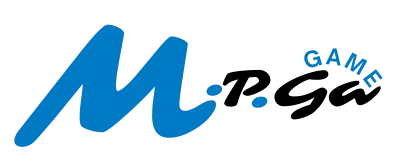Beyond the Buzz: Free Tech Tools That Actually Save Time (and Sanity)

The use of technology promises efficiency, but it often overwhelms companies. Every day, new platforms emerge that promise perfect productivity, but in reality only create noise and distractions. It’s time to critically evaluate your digital toolkit. In the article below, you’ll find a selection of truly useful free tools that simplify your work, minimize your routine, and allow you to focus on what matters most.
What Makes a Tool “Actually Useful”?
In the world of digital solutions, it’s not the number of features that matters, but their quality and impact on the company’s daily operations. A useful tool is not one that has dozens of integrations and modules, but one that you can open and start using almost immediately. Minimal training time is a critical component. If a platform takes a long time to learn, its value quickly depreciates.

Truly useful tools have a noticeable effect. They increase productivity, remove background noise, and help structure thinking. For example, a note-taking system that allows you to quickly capture ideas or a planner with clear task visualization is not just a convenience, it saves hours and mental energy.
The key is to avoid solutions that add another item to the list to check later. A good tool doesn’t create a sense of obligation; it makes it easier. It’s your digital assistant, not another manager of managers. As a result, you get less stress and more time to focus on what’s important.
For example, https://onlymonster.ai/downloads. This is a set of tools created specifically for content creators that helps streamline communication, automate routine work, and focus on creating a valuable product for the audience.
Top Free Tools That Deserve a Spot in Your Stack
| Tool | Purpose | Why It’s Great |
|---|---|---|
| Notion | Planning, note-taking, and system building | Extremely flexible and easy to use—great for organizing your work your way, even solo. |
| Loom | Screen and video recording, asynchronous communication | Saves time by replacing meetings with quick video updates. |
| Zapier | Task automation across different apps and platforms | Automates repetitive tasks, freeing up your time and boosting productivity. |
| Trello | Visual task management using Kanban boards | Simple and effective for organizing projects—ideal for individuals or teams. |
| Grammarly | Writing assistant for English grammar, style, and clarity | Helps you write confidently and professionally—especially useful for content creators and marketers. |
| OnlyMonster | Tools for managing fan-based or customer-focused businesses | Streamlines sales, communication, and customer relationships with minimal effort. |
| Clockify | Time tracking for tasks and projects | Tracks how your time is spent, helping you stay focused and efficient. |
| Canva | Design tool for graphics, presentations, social media, and marketing assets | Lets anyone create beautiful visuals—no design experience needed. |
How to Vet a Tool Before You Waste Time Learning It
In a world of hundreds of services, it’s important not to lose your time and focus. Before diving into learning a new tool, conduct a short audit. Start with something simple – check the community reviews: on Reddit, Product Hunt, YouTube or in professional groups.
Test the tool on one of the typical tasks in your company. If the interface is unclear, the functionality is too complex, or the result does not justify the time spent – abandon the application. A good tool should work for you, not the other way around.
It is also important to assess whether the service solves your specific problem and does not simply follow trendy approaches or productivity patterns. If you need a simple planner, you should not choose a complex ERP system.
Finally, avoid platforms that only work in an ecosystem of five other services. The tool should be self-sufficient or easily integrate with already familiar solutions.
Stack Light, Not Heavy – Build a System That Sticks
True productivity is not about the number of tools, but how well they work together. Many professionals fall into the trap of installing dozens of services, each of which is supposed to improve some part of the process. The result is scattered attention, duplication of functions, and constant switching between platforms.
Don’t build an empire of tools. Instead, choose a minimal set of services that really cover your key tasks and support focus. For example, a combination of Notion + Trello + Loom can completely cover planning, project management, and communication.
Analyze monthly or quarterly: what you actually use, what is duplicated, what takes more time than it brings benefits. Remove the unnecessary without regret.
Build a system around one or two anchor tools – the ones that are the foundation of your work. This will reduce friction between platforms, reduce cognitive load, and give you more energy for the real work. Remember: clarity and simplicity are your best allies in digital work.
Conclusion
The right technology isn’t just another task on your to-do list, it’s a tangible relief from your daily work. It removes clutter, saves time, and frees up space for focus. In an age of digital noise, choosing what’s useful is key to productivity. Free tools don’t mean compromising on quality. If they are chosen wisely, they can become the most valuable elements of the work. The point is not the number of services, but how much they work for you.
